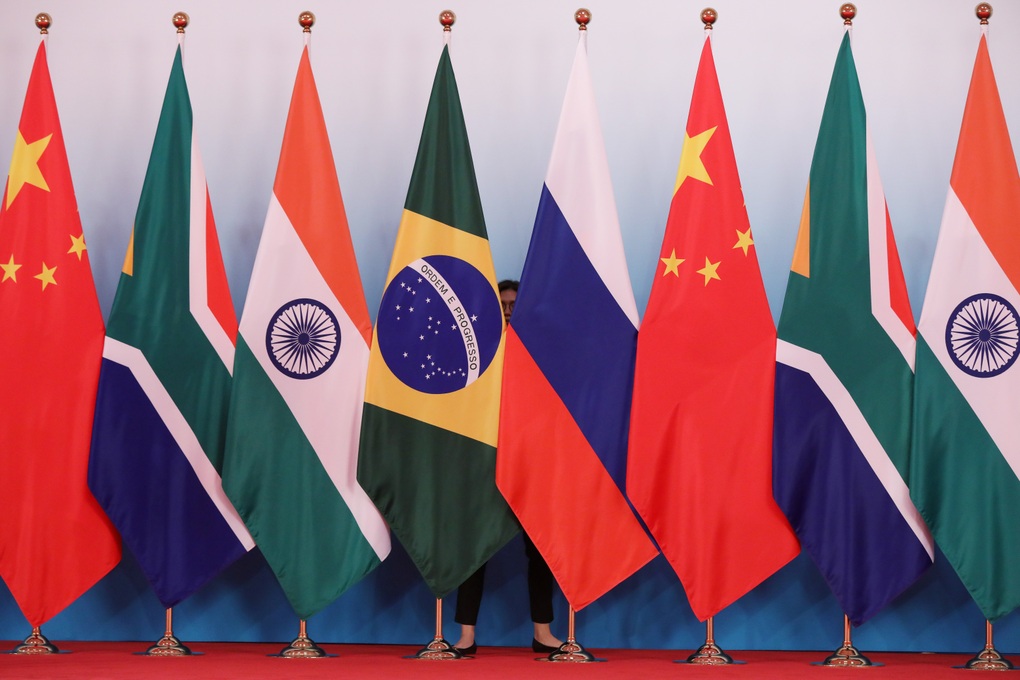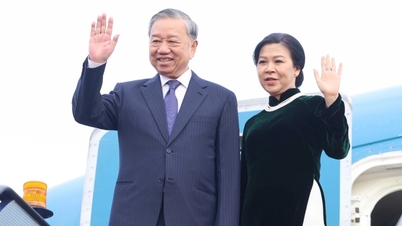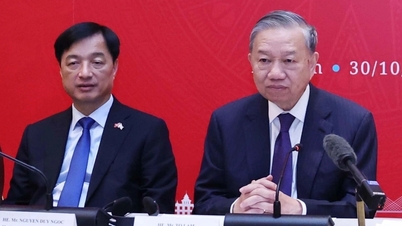
National flags of the five BRICS countries: Brazil, Russia, India, China and South Africa (Photo: Reuters).
Saudi Arabia's state television said on January 2 that the kingdom had officially joined the BRICS bloc.
Saudi Foreign Minister Faisal bin Farhan said in August that the Middle Eastern country would study the details ahead of the proposed January 1 accession date and make an "appropriate decision".
Mr. Farhan once commented that the BRICS group is "a beneficial and important channel" to strengthen economic cooperation.
The BRICS bloc, which previously included Brazil, Russia, India, China and South Africa, is expected to double in size in the coming years. In addition to Saudi Arabia, BRICS plans to add the United Arab Emirates, Egypt, Iran and Ethiopia.
Saudi Arabia's entry into BRICS comes amid rising geopolitical tensions between the US and China, with Beijing seen as seeking to expand its influence in the Middle East more generally.
Despite its strong ties with the US, Saudi Arabia has pursued its own path out of concern that Washington is less committed to Gulf security than before.
China, Saudi Arabia’s biggest oil customer, has called for BRICS to expand as a counterweight to the West. Although Argentina has signaled it will not join BRICS, the expansion is seen as helping emerging economies compete for influence with the West.
Before Saudi Arabia joined, the five BRICS countries had a total area of more than 39.7 million km2 and a total population of 3.21 billion people, equivalent to more than 26.6% of the world's land area and 41.53% of the world's population.
The common point of BRICS is that they are countries with large populations, large areas, and large military potential. They are also emerging economies with strong potential, as the total GDP of the members has continuously grown steadily over the past decades and is expected to increase strongly in the coming years.
Source


![[Photo] General Secretary To Lam meets former British Prime Minister Tony Blair](https://vphoto.vietnam.vn/thumb/1200x675/vietnam/resource/IMAGE/2025/10/30/1761821573624_tbt-tl1-jpg.webp)
![[Photo] Touching scene of thousands of people saving the embankment from the raging water](https://vphoto.vietnam.vn/thumb/1200x675/vietnam/resource/IMAGE/2025/10/30/1761825173837_ndo_br_ho-de-3-jpg.webp)

![[Photo] National Assembly Chairman Tran Thanh Man receives foreign ambassadors who came to say goodbye](https://vphoto.vietnam.vn/thumb/1200x675/vietnam/resource/IMAGE/2025/10/30/1761820977744_ndo_br_1-jpg.webp)
![[Photo] The Third Patriotic Emulation Congress of the Central Internal Affairs Commission](https://vphoto.vietnam.vn/thumb/1200x675/vietnam/resource/IMAGE/2025/10/30/1761831176178_dh-thi-dua-yeu-nuoc-5076-2710-jpg.webp)
![[Photo] General Secretary To Lam attends the Vietnam-UK High-Level Economic Conference](https://vphoto.vietnam.vn/thumb/1200x675/vietnam/resource/IMAGE/2025/10/30/1761825773922_anh-1-3371-jpg.webp)






































































































Comment (0)